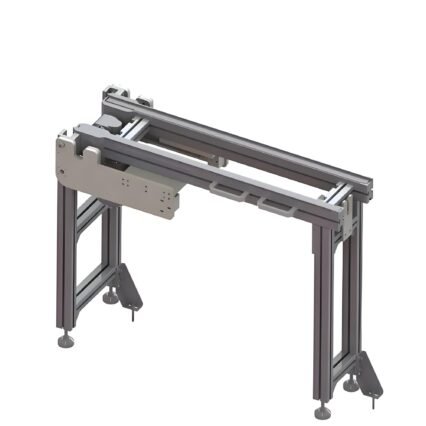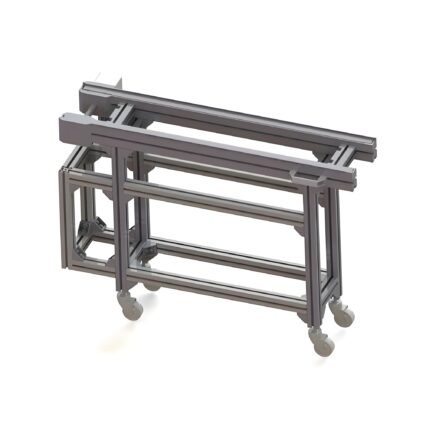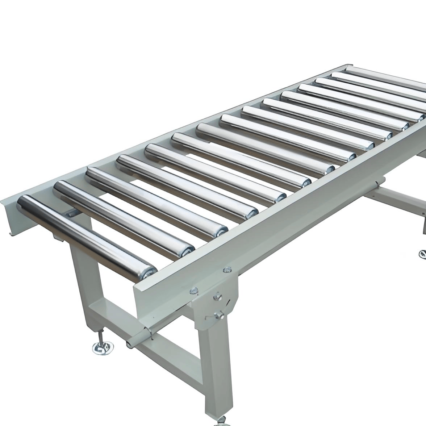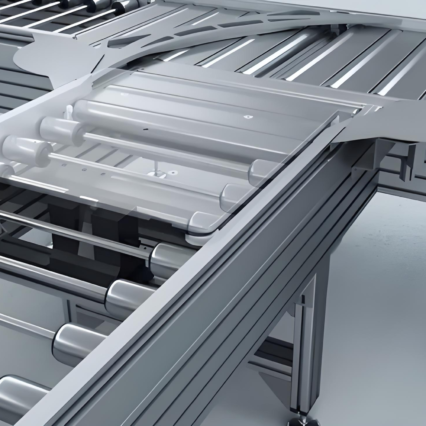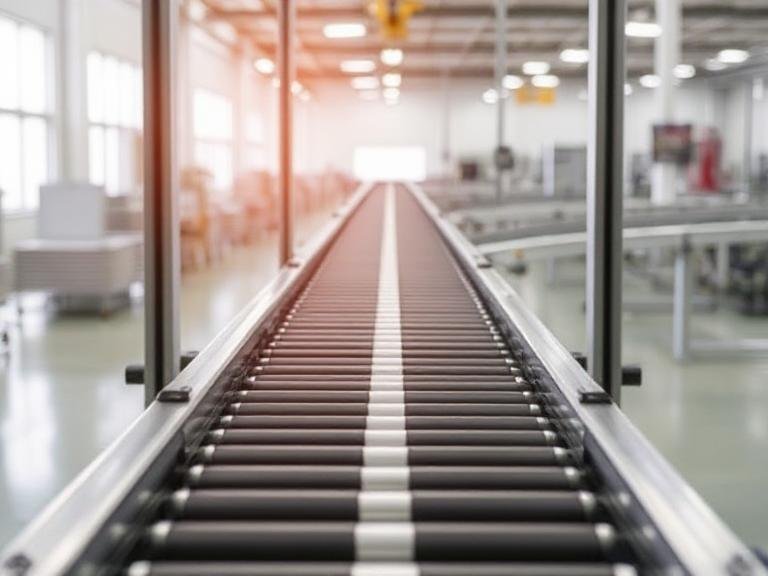Table des matières
- Introduction
- What Is a Conveyor Belt System?
- Benefits of a Well-Designed Conveyor System
- Key Considerations in Designing a Conveyor System
- Material to Be Transported
- Space and Layout
- Speed and Load Capacity
- Step-by-Step Process for Designing a Conveyor System
- Define Requirements
- Choose the Right Conveyor Type
- Design the Belt and Drive System
- Select Supporting Components
- Plan for Maintenance and Safety
- Applications of Conveyor Belt Systems
- Common FAQs About Conveyor Belt Systems
Introduction
A well-designed système de bande transporteuse can streamline operations, enhance productivity, and reduce costs in industrial settings. Designing such a system requires careful planning and a clear understanding of the needs it will serve.
This guide provides a comprehensive overview of the steps involved in designing a conveyor belt system, key factors to consider, and how Vitrans, a leading manufacturer of conveyor systems, can help meet your needs.

What Is a Conveyor Belt System?
A conveyor belt system is a mechanical structure that moves goods, materials, or products from one location to another using a continuous belt. It is a critical component in industries like manufacturing, logistics, and warehousing, ensuring efficient material handling.
Benefits of a Well-Designed Conveyor System
- Efficacité accrue : Streamlines material transport and minimizes manual labor.
- Cost Savings: Reduces operational costs over time through automation.
- Personnalisation : Tailored designs meet specific industrial needs.
- La sécurité : Reduces workplace injuries by automating material handling.
Key Considerations in Designing a Conveyor System
Material to Be Transported
- Weight, size, and type of the materials will dictate the design.
- For example: fragile goods require smooth, controlled movement.
Space and Layout
- Consider floor space and any vertical integration required.
- Ensure the system integrates seamlessly into existing infrastructure.
Speed and Load Capacity
- Match the conveyor’s speed and load capacity to production rates.
- Heavy-duty operations may require reinforced belts or chains.
Step-by-Step Process for Designing a Conveyor System
1. Define Requirements
Start by determining the specific needs of your system:
- What materials will be transported?
- What are the size, weight, and handling requirements?
- What is the required speed of the conveyor?
2. Choose the Right Conveyor Type
Vitrans offers various conveyor systems to suit different needs:
- Belt Pallet Conveyor: Ideal for transporting flat, heavy objects.
- Accumulated Chain Conveyor: Perfect for high-capacity assembly lines.
- Attachment Conveyor: Handles products with specific attachments.
- Product Transfer Conveyor: Transfers materials efficiently between different points.
3. Design the Belt and Drive System
- Select the belt material based on durability, friction, and environmental factors.
- Determine the belt width and length to match operational requirements.
- Design the drive system (motor and rollers) for smooth and reliable operation.
4. Select Supporting Components
- Rollers and Frames: Ensure the frame is sturdy and rollers align properly.
- Sensors and Controls: Automate operations with sensors for speed and load monitoring.
- Caractéristiques de sécurité : Add emergency stops and protective barriers.
5. Plan for Maintenance and Safety
- Design for easy access to components for repairs and cleaning.
- Include built-in safety measures like overload protection and anti-slip belts.
Applications of Conveyor Belt Systems
- Manufacturing: Automates assembly lines and material transport.
- Warehousing: Speeds up order picking and inventory movement.
- Logistics: Streamlines sorting and loading processes.
- Food Industry: Ensures hygienic transportation of edible goods.
Pourquoi choisir Vitrans ?
Avec plus de 10 ans d'expérience, Vitrans is a trusted name in conveyor system manufacturing. Here’s why:
- High Quality: Proven reliability in various industrial production lines.
- Prix compétitifs : Benefit from rich supply chain resources in China.
- Une portée mondiale : Exporting to multiple countries worldwide.
- Short Lead Time: Rapid delivery for time-sensitive projects.
produits
-
 Convoyeur à palettes à bande plate FC2
Convoyeur à palettes à bande plate FC2 -
 Convoyeur à palettes à courroie crantée BC2
Convoyeur à palettes à courroie crantée BC2 -
 Convoyeur de palettes à chaîne à rouleaux AC2
Convoyeur de palettes à chaîne à rouleaux AC2 -
 Convoyeur à chaîne à rouleaux AC2/H
Convoyeur à chaîne à rouleaux AC2/H -
 Convoyeur de palettes à chaîne en plastique PC2
Convoyeur de palettes à chaîne en plastique PC2 -
 Porte levante
Porte levante -
 Porte de tirage
Porte de tirage -
 Convoyeur à rouleaux pour travaux légers
Convoyeur à rouleaux pour travaux légers -
 Convoyeur à rouleaux empilables pour charges lourdes
Convoyeur à rouleaux empilables pour charges lourdes
Common FAQs About Conveyor Belt Systems
1. How do I choose the right conveyor system for my business?
Consider the type of materials, load capacity, required speed, and space availability. Vitrans offers various systems tailored to specific needs.
2. How long does it take to install a conveyor system?
Installation time depends on system complexity and size. Simple systems may take a few days, while larger ones can take weeks.
3. How do I maintain a conveyor belt system?
Regularly clean the belt, check tension, and inspect components for wear and tear. Vitrans designs systems with easy maintenance in mind.
Advertisement: Vitrans Conveyor Systems
- Reliable for heavy-duty applications.
- Supports smooth material handling.
- Designed for high-capacity production lines.
- Enhances efficiency in assembly processes.
- Customizable for unique product handling.
- Durable and versatile design.
- Streamlines the transfer of goods between processes.
- Ideal for multi-stage production lines.
Discover Vitrans’ range of affordable, high-quality conveyor solutions to enhance your industrial operations!






